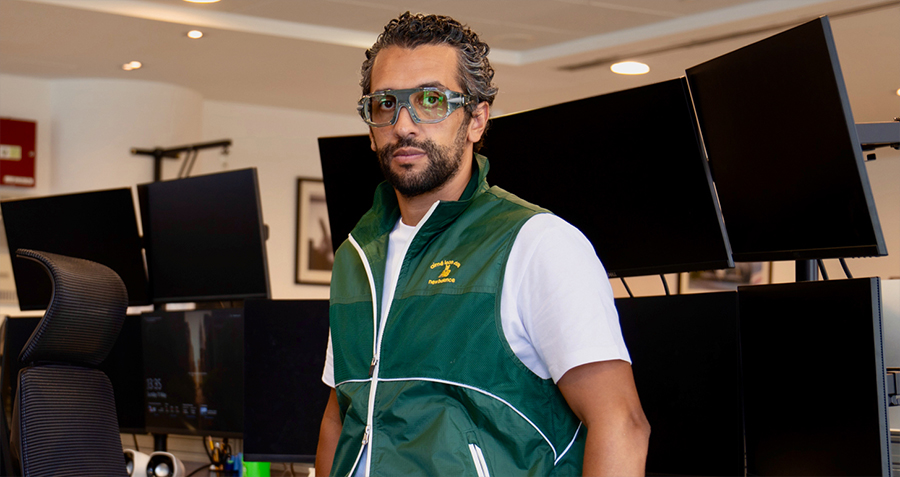An increasingly strained geopolitical relationship with much of the rest of the world has been the dominant story regarding China in recent years, which combined with an economic slowdown and its consequences have had a knock-on effect on the country’s business environment. But while businesses, both foreign and domestic, are having to deal with new constraints, companies on both sides have shown great resilience and creativity when it comes to maintaining or even increasing their cross-border trade and investment activities.
In this interview, CEO of global technology and financial advisory firm Serica, Benjamin Speyer, discusses the impact of public perception, government policy and economic headwinds on a company’s ability to expand into—or out of—China and the shifting patterns of Chinese FDI.
Q: How has the appetite for businesses entering the China market changed in the last few years?
A: Increasingly complex economic, regulatory, and geopolitical headwinds have created unprecedented uncertainty of the Chinese market resulting in foreign investment turning negative for the first time in Q3 2023. But that being said, China’s burgeoning middle class, world-leading manufacturing capabilities and increasingly sophisticated technology are still highly alluring to countless companies around the world.
This has created a conundrum for many companies, leaving the majority in a state of strategic paralysis while the rest pursue disparate courses of action. For example, Apple is derisking by implementing the “China +1” principle, Carrefour is decoupling with heavy divestments and Volkswagen is nearshoring by doubling down its efforts in what is becoming known as an “in China, for China” approach.
For me, I think what’s undeniable is that China is at a major crossroads in its economic development, and companies – both domestic and foreign – are having to adapt their strategy and approach to the new normal.
Q: What are the key barriers faced by businesses looking to enter the market today?
A: The first barrier would be the geopolitical environment, including the deteriorating relations with the US and the trade war expanding restrictions on key technologies such as semiconductors. In Europe, in light of the Russian invasion of Ukraine, there is also a sense of a need to reduce their economic reliance on China through friendshoring and enhanced foreign trade controls.
But honestly, these issues pale in comparison to the core historic challenges of doing business in China—language barriers, cultural differences, contrasting professional practices, bureaucratic hurdles, localization challenges, IP protection, extremely fierce local competition, etc. So ultimately, as much as things are changing, the core challenges remain a constant and shouldn’t be underestimated.
In fact, I’d say that the silver lining of the geopolitical climate is that it has spurred companies to invest time and resources into analyzing the market, identifying reputable local partners, and developing robust strategies to determine if and how they can be successful here.
Q: What are the most popular sectors for cross-border investment and M&A in the technology sector right now?
A: Certain areas, such as telecommunications, semiconductors, surveillance technology, bleeding edge AI, advanced robotics, and other similar dual-use tech, are now completely off limits. This was inevitable, given that some differences between China and the West will never be bridged. But there’s more that unites us than divides us. Sectors that are addressing shared existential challenges such as climate change, food security, healthcare access and poverty alleviation are all booming. This is where we’ve seen most of the success stories in recent years.
It’s also supported by wider policies in both China and the Western markets. So, for example, here in China they’ve repealed many foreign ownership restrictions, established grant and subsidy programs in different economic zones, and have rolled out initiatives like Healthy China 2030 and Net Zero 2060. In the West, the Inflation Reduction Act in the US and the Green Deal in the EU are having a similar effect. The overall outlook looks very positive for these sectors.
Q: How do you think the advent of generative AI will affect business in China and will they be able to reach AI parity with the US anytime soon?
A: It’s undeniable that the US still dominates globally in AI. Compared to China, they have almost five times the amount of high-level AI talent, private investment into the sectors is around three times higher and they dominate most of the advanced chip technologies. But China has advantages that they could snowball over time to reach AI parity with the US. It has high technology adoption rates, widespread government support, the world’s largest AI model and an army of STEM graduates that averages around four and a half million a year.
But here and now, Chinese companies currently cannot compete technologically. Instead, they are forced to work lean, investing in practical solutions across a wide range of sectors banking on an increase in their bottom line in the short term with the hope of snowballing the development of their AI capabilities down the line.
The real battleground for the future of AI will be in complex, rapidly changing emerging markets across Asia, Africa and Latin America where the Chinese approach has an inherent advantage. If Western companies continue to underestimate or fail to learn from China’s approach to innovation, they’ll struggle to compete in these emerging markets and risk falling behind as a result.
Q: How have Chinese technology companies adapted to the new normal? Are there any markable changes in their business activities abroad?
A: We have seen an unprecedented number of Chinese companies aggressively expanding overseas. Companies such as BYD, Shein and Temu are winning customers across the US and the EU. Xiaomi and CATL are setting up manufacturing bases in traditional low-cost markets like Mexico and Eastern Europe, as well as inside the US itself as part of a nearshoring strategy to bypass trade tariffs and reduce costs. Financially, the capital markets in China have dried up and cross-border transactions are more complicated, so a lot of companies are setting up their operations in places like Singapore and the Middle East, while others are using countries like the UK and Germany as talent and R&D bases. One development that has really picked up steam recently is a surge in Middle Eastern investment into Chinese tech firms that has gone some way to filling the void left by US-led venture capital and private equity firms. All-in-all, it feels like the era of global China is truly upon us.
Q: What type of unique or special technologies does China possess that it can effectively compete with on the global stage?
A: They have highly practical technology that comes at a very competitive price, which governments and consumers across the world need. Using greentech as an example, from the consumer point of view the vast majority of the mass production and sales of solar, wind, hydrogen and electric vehicles (EVs) are all Chinese. For green infrastructure, such as grid management technology and high-scale solar farms, China is uniquely placed to fill that gap for a price and speed that other countries cannot currently compete with.
It all broadly links back to China’s core innovation advantage, its unrivaled ability to rapidly adopt, scale and monetize new technologies. We’ve seen this in countless sectors such as digital commerce, fintech, clean energy, electronics, telecommunications, and more recently EVs. This is an approach that a lot of the world can learn from, particularly now as investors are tightening their belts and costs are rising.
Q: What are the main challenges Chinese companies face when entering Western markets?
A: The first major issue is that the general sentiment towards China is at an all-time low, but that will hopefully improve. It is in many ways reminiscent of the sentiment towards Japan in the 1980s and 1990s. I think Japan ingratiated itself more when it started setting up manufacturing bases abroad and creating jobs there rather than just within Japan.
But honestly, the biggest challenges are similar to what Western companies face when they’re coming into China—language barriers, cultural differences and contrasting professional approaches that result in very poor literature and communication practices. Most Chinese companies are also fairly homogenous and have few senior foreign leaders in their headquarters to help them internationalize and compete more effectively. That can result in an unwillingness or inability to adapt to unique market conditions. More modern companies, such as unicorns have founders who studied and worked abroad and will do much better than traditional companies in this respect.
Q: How do you see trade and investment between China and the West developing over the next five to ten years?
A: As with any China prediction, my take could be completely wrong, but I think the amount of trade and investment will increase significantly, but it will not be direct.
What I mean by that is that there is a split being driven by politics and shifting regulations, but the economic reality is that both sides are still highly reliant on each other. What will change is where and how that is done. For example, Mexico recently became the US’ largest trading partner but Chinese FDI into Mexico over the same period grew sharply. Within the US, Chinese companies are establishing manufacturing bases nationwide, and companies like Temu and Shein dominate the app charts. The US is still buying all things Chinese; they are just not necessarily buying them directly from China.
From an investment and M&A perspective, most of that is going through Singapore and other similar tax-efficient and politically neutral jurisdictions. Using FDI flow analysis to understand the scope and scale of trade and investments between them will become less and less effective as time goes on.
China and the West have a highly symbiotic relationship that won’t change at the fundamental level, but will at the operational level. I envision that nearshoring and friendshoring will characterise 2024 much like ‘derisking’ has this year. Who the winners and losers of this new normal will be remains to be seen.
Q: What advice would you give to companies expanding into, or out of, the Chinese market?
A: There is no manual or step-by-step guide for success in China, but there are key principles to follow that will help guide you toward success. The first is to strive for objectivity. It’s easy to get emotive about such an unfamiliar market, so making decisions based on market data and expert advice, rather than hearsay and anecdotal information is a good place to start. Next is assessing your market readiness, and taking the time to understand whether now is the right time to enter the market. Maybe it is worth waiting a couple of years or perhaps you should go somewhere else.
Another is investing the time into understanding how to localize your approach. If you are a Western company entering China, focus on agility and flexibility, and if you are Chinese, focus on details and linear planning, so that you can successfully adapt to the market. Lastly, leverage local partnerships. Take your time to find reputable people and companies to augment your entry, governance, operations and commercial activities. Without that local knowledge and talent, you’ll find it hard to grow and succeed. If you follow all four of those principles and be mindful of them, whatever stage in your journey you’re at, I think you can be successful.
Interview by Patrick Body
Bio

Benjamin Speyer is CEO of Serica, a global technology and financial advisory firm specializing in the Chinese market, discusses trends in China’s technology sector and M&A environment, as well as the changing dynamics of cross-border trade and investment from direct to indirect. He is also an advisory board member of the UK National Committee on China and a Northern Powerhouse International Champion in China for the UK Department for Business & Trade.


















